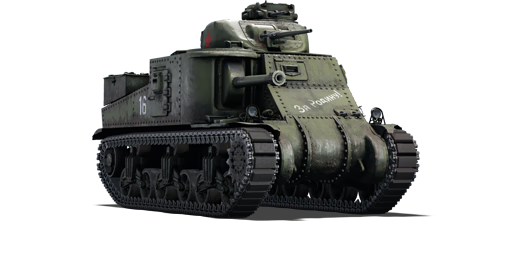The M3 Medium (USSR) is a premium gift Soviet medium tank. It was introduced during Update 1.55 "Royal Armour". It was first obtained via the special event "Defender combined battles" in 20 February 2016 and has been occasionally available since, such as in the September "Tanker's Day" events in 2016, 2017 and as a battle trophy vehicle in the September 2018 and March 2020 Warbonds shop.
Aside from the paint job, the M3 Medium is virtually identical to the American M3 Lee; the different name comes from the Russian designation of just "M3 Medium". The M3 is most well recognized for its tall profile and two cannons. The suspension resembles that of the M4 Sherman, the only notable difference being the return rollers' positions. The hull front is also stepped into two plates, where the upper is closer to vertical. The large sponson on the right side of the tank carries the main 75 mm gun; note that with 2 crew, it is the operational gun. The 37 mm gun is in a turret, mounted with a leftward offset, and has a small MG cupola on top.










 2 x (40 / 50 / 60) %
2 x (40 / 50 / 60) % 
 2 x 118 %
2 x 118 % 
